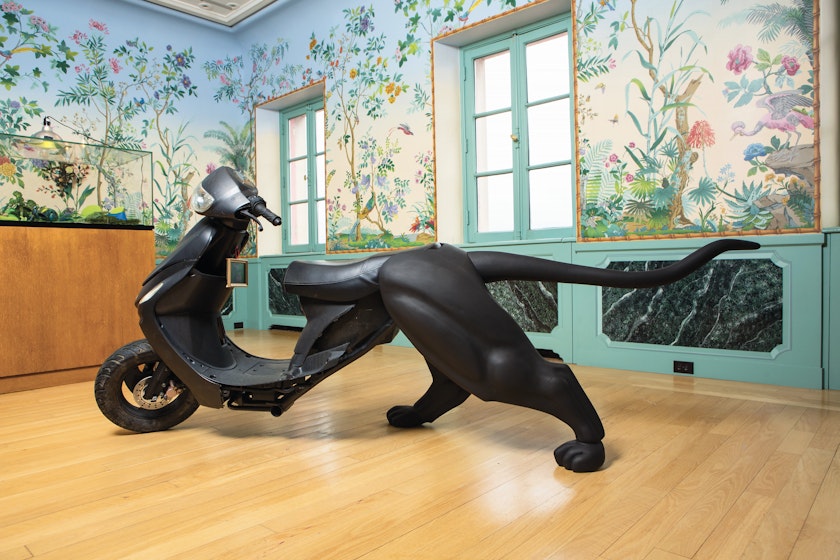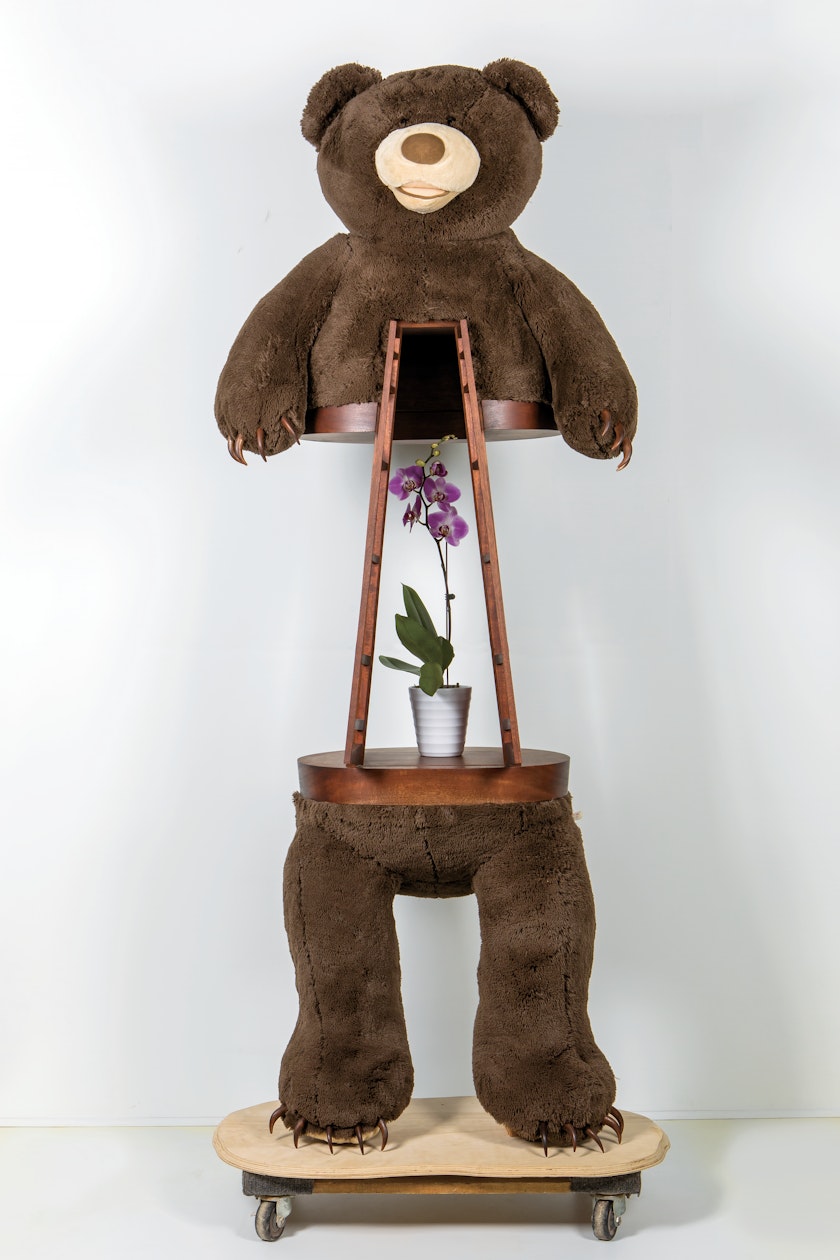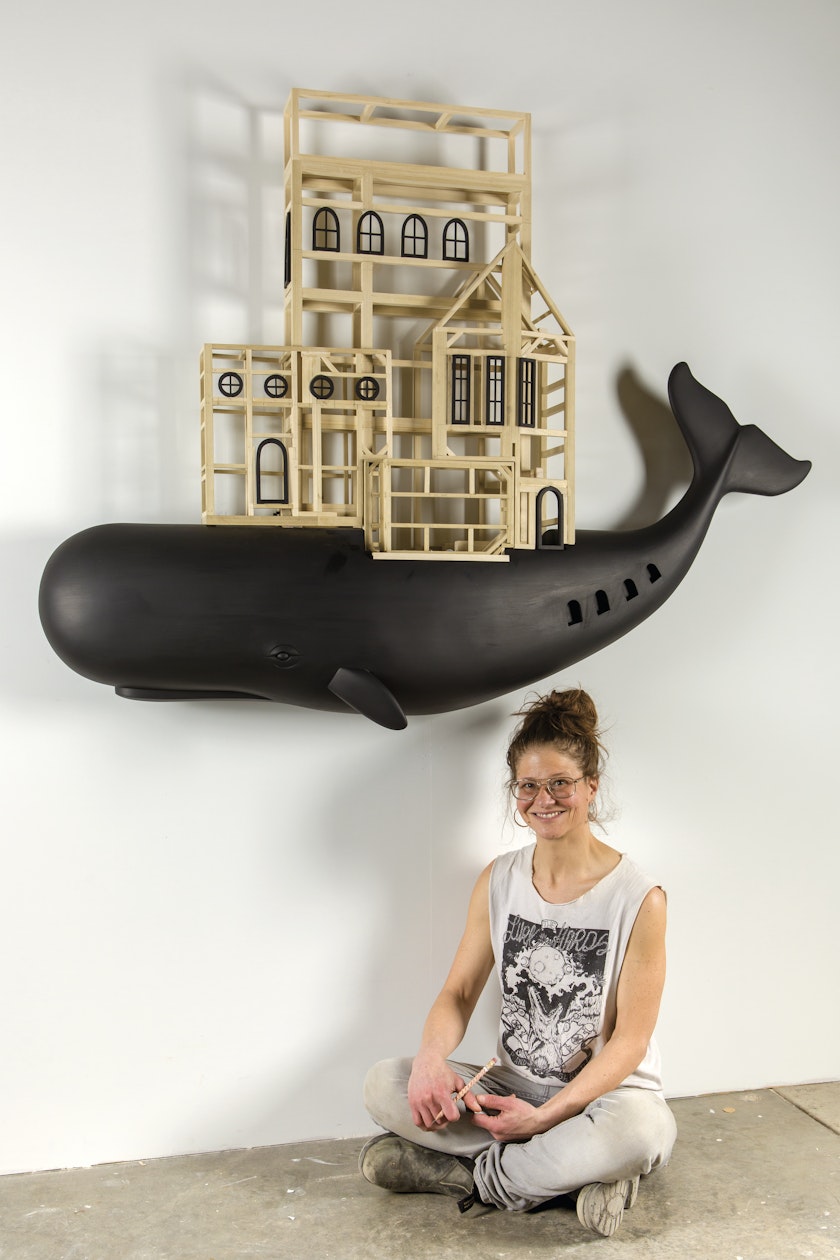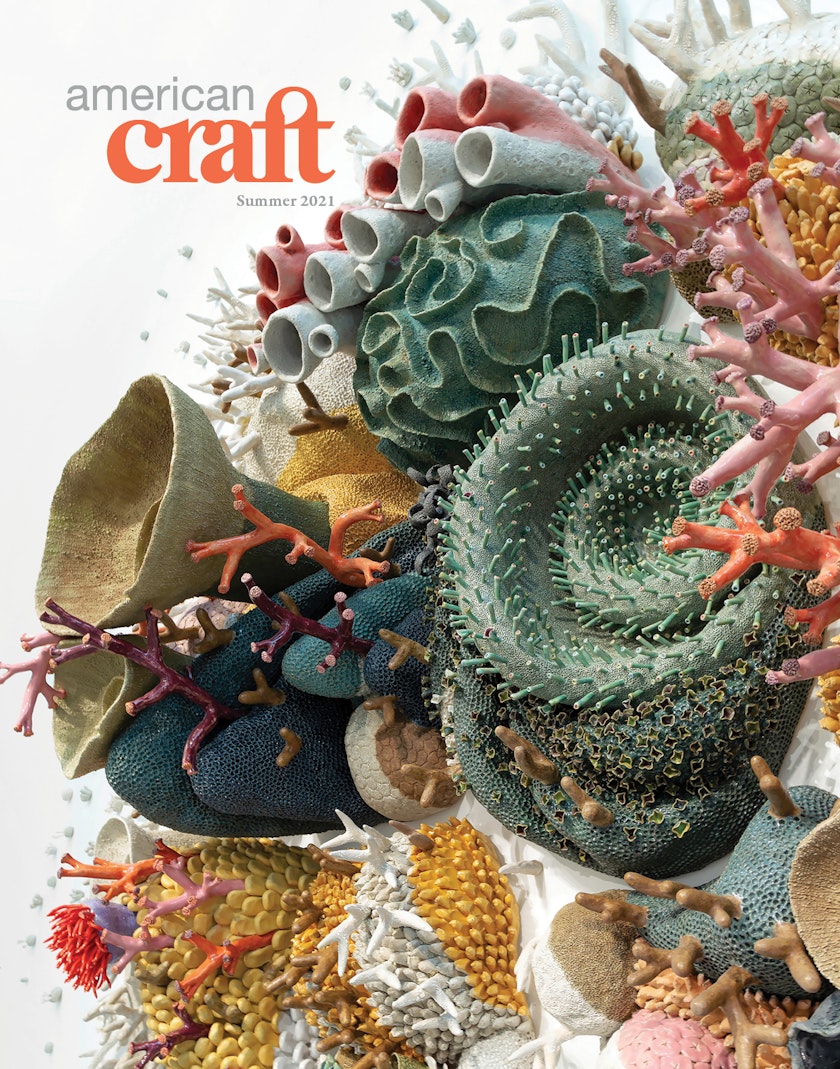Maker: Sylvie Rosenthal
Maker: Sylvie Rosenthal
Rosenthal stands beside Untitled (Whale), a work in progress made from basswood and poplar. The artist’s sculptures abound in abrupt, whimsical, and surprising juxtapositions—things that “can’t be read in one take.” Photo by Jim Escalante.
When we talked, she was making tiny windows for the architectural portion of the whale. “These have woodworking joinery in them even though they’re minuscule,” she says. “I could have cut them out of plywood, but I need them to not break—or when they break, I need to know how they’re repairable.”
And there you have it: the seamless connection between fine craft and wild imagination in this Madison, Wisconsin–based artist, who has become known for sculptural pieces that are whimsical, often surreal, and always challenging. There’s the basswood body of a giant cat, fused with the front half of a real moped; the stuffed bear with cabinetry in its stomach; and the installation Still Life as Oasis, a table topped with a skull, a camel, a potted plant, and a giant wooden stopwatch that’s been “turned to stone” by marbling.
Important in the challenge of a Rosenthal piece is its backstory, often the result of her research into history, botany, and other fields, plus the conceptual energy she adds. The bear-cabinet, she says, is in part a reflection on how we’ve tamed the wild via natural history museums and other forms of classification and storage. The “stone” stopwatch—produced by a painstaking dipping process like paper marbling on steroids—is a meditation on time itself: the stone-deep time of geology and the flashing instants that a stopwatch tracks.

Battle Cat fuses the wood body of a 1980s cartoon cat (from the Masters of the Universe TV series) with the front half of an actual moped. Photo by Jim Escalante.

Still Life as Oasis’ exploration of time and space includes a gemlike version of the Soviet Sputnik satellite that “reads like a model of the coronavirus today,” according to Rosenthal. Photo by Kevin Miyazaki.
These concepts and origin stories aren’t necessarily obvious to a viewer, and that’s okay with her. “I’m fine with being somewhat enigmatic so that things can’t be read in one take,” she says. “I want to spark curiosity as an entryway into the stories about the object. Or prompt people to ask, ‘Is it this, or that, or could it be both?’”

In Bear Cabinet, a teddy is an icon of how our modes of display have “tamed” nature. Photo by Jim Escalante.
Rosenthal also makes mirrors and furniture on commission while she works to help the next generations of craftspeople flourish. “Teaching is really important to me,” she says, “teaching and empowering kids to use tools.” In the past year, she’s been creating wood-sculpture kits for kids, which she sells on a subscription basis.
“Another of my goals is to mentor people,” she adds. “As a queer person, I hire queer people for my studio, and I’d like to get more people of color and gender nonbinary people into a studio like mine. It’s a safe space for people who wouldn’t necessarily want to be in a traditional woodshop.”
Discover More Inspiring Artists in Our Magazine
Become a member to get a subscription to American Craft magazine and experience the work of artists who are defining the craft movement today.



